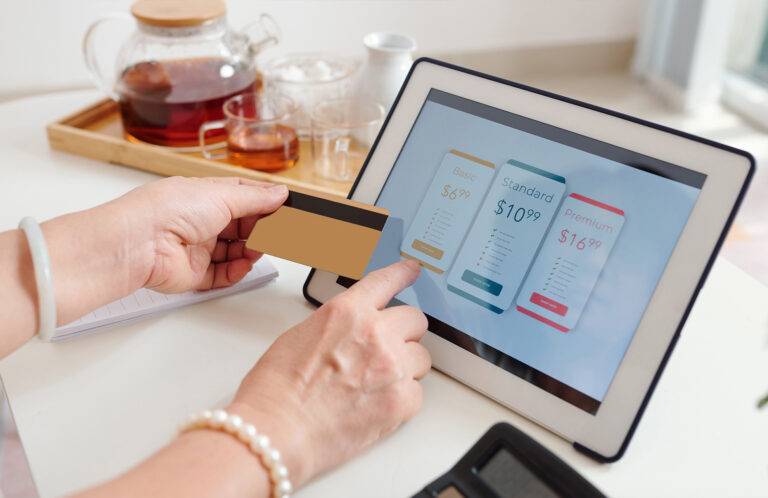Shopping, in the traditional sense, involves a buyer and a seller. A potential buyer learns about a product, usually from exposure to branded marketing, and if it’s compelling enough to buy, they do so via a store or website. Following the purchase, the buyer’s role shifts to that of a consumer (or user if you prefer). If as a consumer, they are happy with the product, they might buy it again, or perhaps buy it for someone else; if not, they will likely try an alternative, and much of the initial marketing spend to move the buyer down the funnel from awareness and interest, to consideration, and, ultimately, to purchase won’t amount to much profit over time.
Data geeks run algorithms attempting to dive deeper into this spectrum of consumer behavior, hoping to understand how to get buyers to make repeat purchases—and allow businesses to reap higher profits without increasing customer acquisition costs.
As brands struggle to stay alive, a new mode of commerce is on the rise, one largely driven by direct-to-customer brands generating repeat purchases via subscriptions. In recent years, and especially in the wake of the pandemic, the number of such businesses has grown significantly.
Shifting to a subscription model fundamentally transforms how a company chooses to operate. While companies like Netflix, Spotify, Salesforce, Amazon, and others may offer very different products and services, they are all pioneers in this changing world of digital commerce, where customers are being transformed from one-time purchasers to loyal subscribers. Spotify, the most successful music-streaming service globally, has over 285 million active monthly users (as of March 2020), about half of whom are paid subscribers. Amazon Prime boasts over 100 million members. Netflix, the global leader in the world of video-on-demand, now has over 180 million subscribers across 190+ countries.
These sorts of consumer-oriented subscription businesses are seeing tremendous growth. Fueled by venture-capital investment, a plethora of start-ups have also launched and grown successful subscription money makers in a wide range of categories, including food, personal care, baby, beauty, apparel, contact lenses, vitamins, and more.
IPSY, a cosmetics-sample-box company that ships a “Glam Bag” to over 3 million subscribers each month, is widely considered to be one of the biggest subscription success stories to date. In 2015 the company was valued at $500 million, and recent reports suggest it could sell for as high as $2 billion.
After Dollar Shave Club released its hilarious viral marketing video, its subscription razors propelled the men’s grooming space to new heights, knocking Gillette and Schick back on their heels and prompting other new entrants to launch similar offerings. The company grew its subscriber count to just shy of 4 million subscribers by 2018, even as it faced competition from copycats like Harry’s.
Stitch Fix curates a box of stylish fashion items which it sends directly to its dedicated customers, many of which opt for recurring boxes, while UK-founded Graze ships monthly boxes of healthy snacks to its loyal followers. This kind of curation is a common theme across other subscription categories, such as food delivery, where meal kits, such as Plated, Hello Fresh and Blue Apron, send out recipes and all the necessary ingredients for a custom, cook-at-home experience; an attractive value proposition in the wake of a pandemic.
A growing number of subscription players provide effortless replenishment of everyday items, automating the purchase and delivery cycle of household staples such as diapers or laundry detergent. While Dollar Shave Club has mastered this subscription category with its razor offering, others, like Amazon, are operating similar business models. “Subscribe & Save” offers a 5 to 15 percent discount if consumers agree to regular deliveries of eligible goods like coffee and peanut butter. Jessica Alba’s Honest Company applies a similar methodology to its subscription plans on things like diapers and wipes.
It’s safe to say that the subscription-based economy has now fully entered the mainstream. The companies noted above—and others, like BarkBox, Apple Music, Dropbox, and many more—have all grown revenue and customer lifetime value by acquiring subscribers.
There’s every reason to think there will be further growth ahead. The subscription e-commerce market more than doubled each year between 2011 and 2016, with total sales of the sector’s leaders growing from $57 million to $2.6 billion. From 2012 to 2018, businesses using a subscription model saw revenue growth that was about five times faster than that of American retail sales and S&P 500 company revenues—industry experts predict that by 2020 over 80 percent of software companies will use subscription models. And, the assumption is that the impact of COVID-19 pandemic will boost revenue of subscription companies in a variety of sectors as people continue to spend time online looking for more efficient ways to shop and consume from home.
In the new era of commerce, where Amazon looms large, companies like IPSY, Dollar Shave Club, and Stitch Fix, to name a few, have provided key insights into how brands should be thinking about the next chapter of selling stuff in the digital age. These names and many more companies are betting on the power of subscription to stabilize cash flow and inventory, add recurring revenue, and, most important, boost customer loyalty. Interesting times, to say the least.



